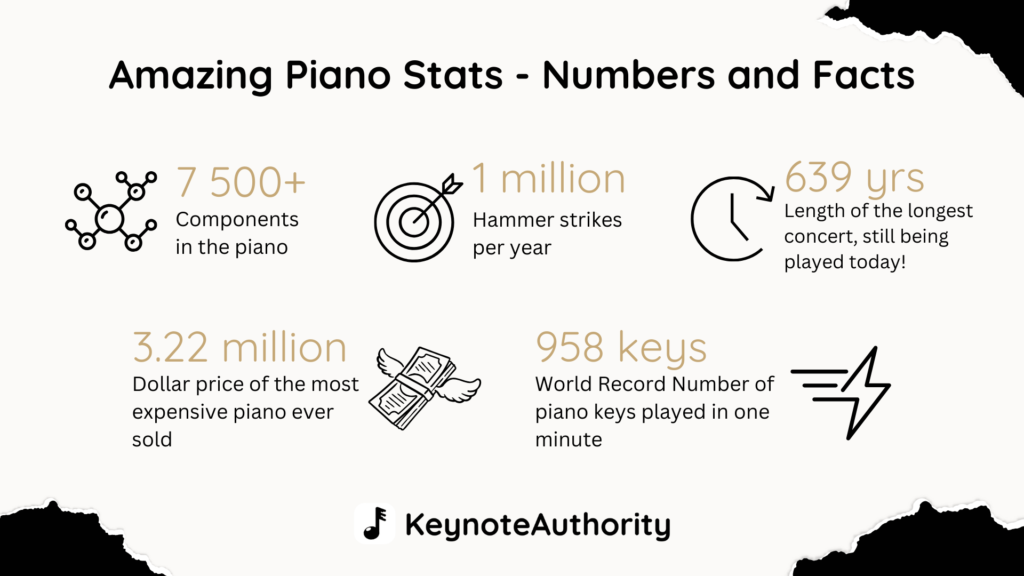
Did you know the oldest surviving piano is over 300 years old? Or that a standard grand piano withstands an incredible 20 tons of string tension?
The piano is far more than just a beautiful instrument—it’s a marvel of engineering, a cornerstone of music history, and a symbol of cultural expression.
Whether you’re a dedicated pianist, a casual player, or just someone who appreciates music, this article will take you on an incredible journey through some of the most fascinating and surprising piano facts and numbers.
From historical curiosities to jaw-dropping technical details, prepare to see the piano in a whole new light!
I have included a full list of sources and references at the bottom of this page.
Historical and Cultural Statistics
1. The Oldest Surviving Piano: Built in 1720
Pianos like we know them today have been around since a long time; in fact, the oldest piano still in existence was crafted by Bartolomeo Cristofori in 1720. This 300+ year old piece of history is a testament to his ingenuity and has been carefully preserved, offering a glimpse into the origins of modern piano design. You can read more about it in my article about the history of piano.
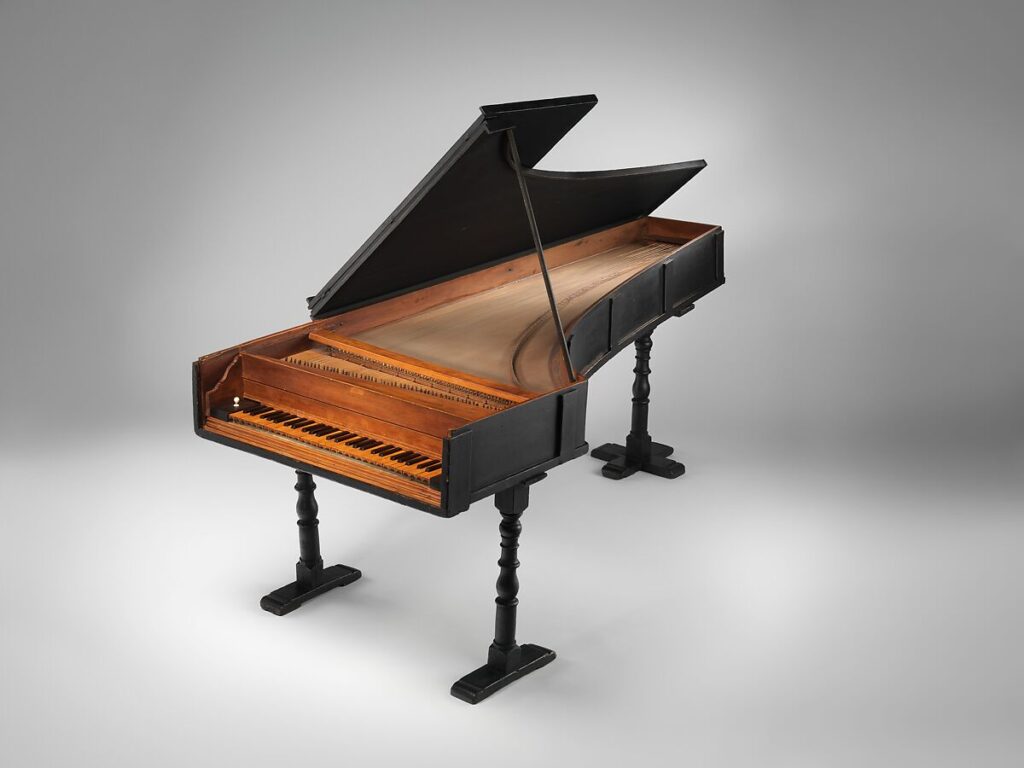
2. Over 40 Million People Worldwide Play the Piano
Thanks to its versatility and accessibility, the piano has earned its place as one of the world’s most popular instruments. While it is difficult to determine the exact number of piano players globally or their skill levels, various sources estimate the figure to be around 40 million people. However, this number could be significantly higher when considering informal players and those who play the instrument as a hobby. Also, many musicians play multiple instruments and use the piano as a fundamental tool for developing technique, music theory, and composition.
3. China’s Piano Market: Up to 400 000 piano’s Sold Annually at peak
A significant portion of global piano players are in China, where it was estimated that over 30 million children were taking piano lessons before the pandemic. At its peak in 2019, piano sales reached a record 400,000 units, far surpassing sales in other regions. However, it seems that this trend has shifted since Covid-19, with manufacturers reporting sharp declines in sales and profits in 2023 and 2024; families are facing increasing financial pressures, and don’t have extra money to spend on such an expensive instrument.
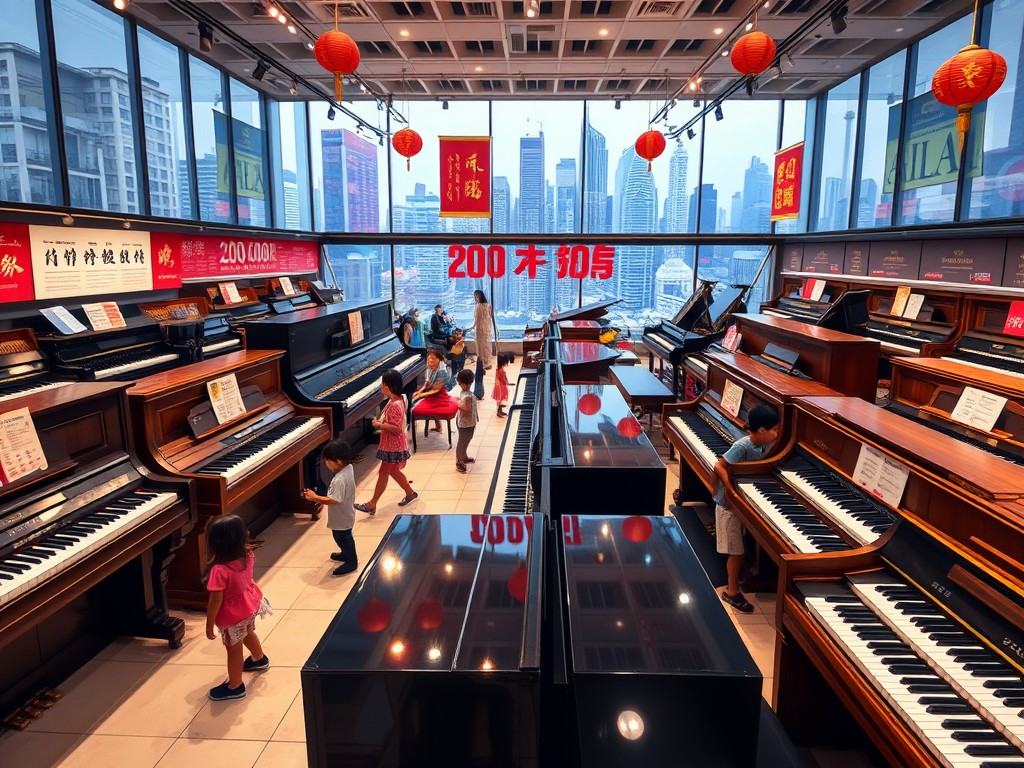
4. Franz Liszt’s Legacy: Over 700 Works for Piano
Franz Liszt, one of history’s most prolific composers, left an unparalleled legacy with as much as 800 compositions for the piano. His works range from technically dazzling etudes to emotional pieces, demonstrating the piano’s expressive range.
Technical and Manufacturing Numbers
5. 230 Strings and 20 Tons of Tension
A standard piano contains approximately 230 steel strings, with each one exerting a tremendous amount of tension. Combined, this totals over 20 tons of tension on the cast-iron frame, which is specially designed to endure these forces.
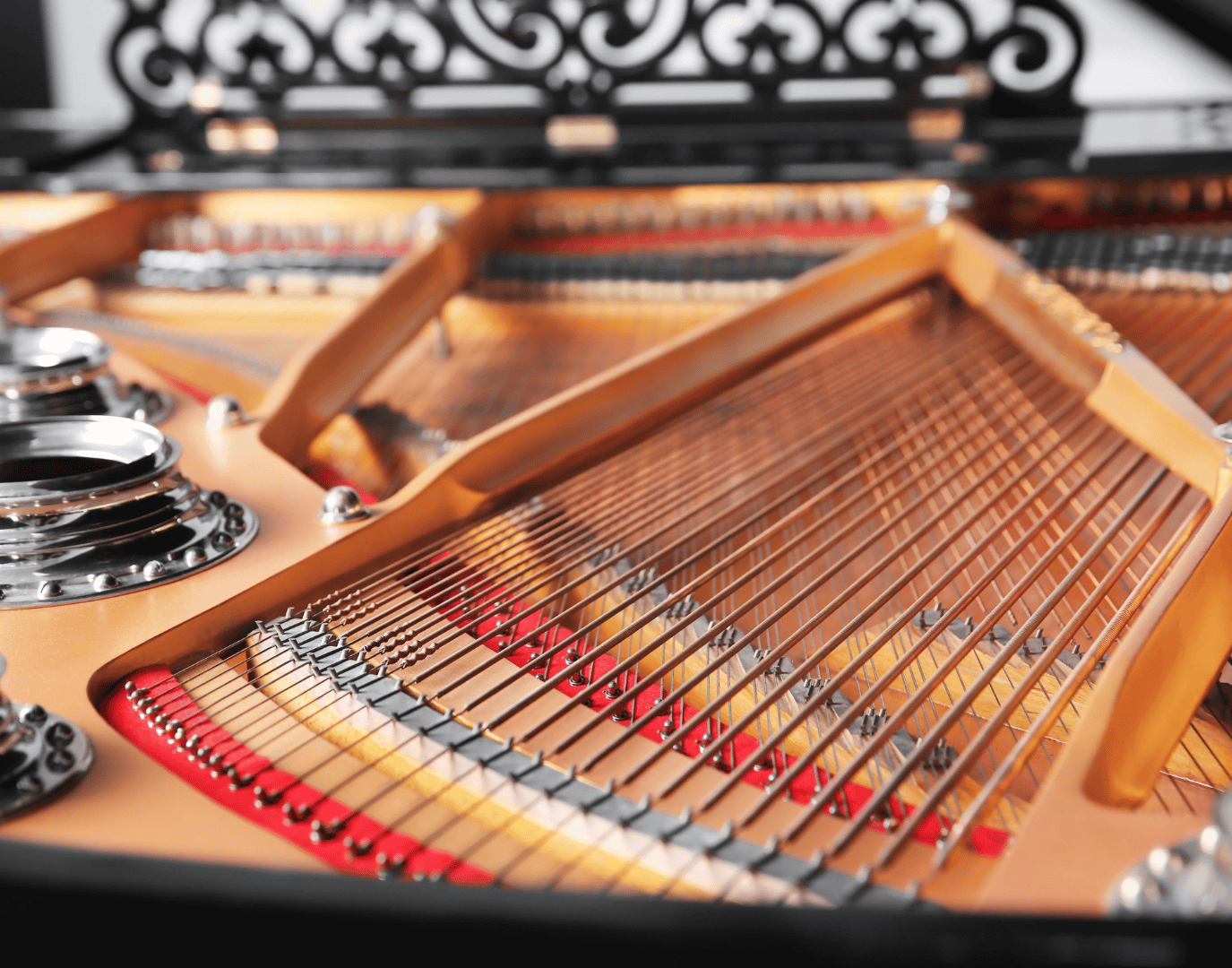
6. 88 Keys—and Sometimes More
The standard piano features 88 keys, comprising 52 white keys and 36 black keys. However, specialized instruments like the Bösendorfer Imperial extend this range to 97 keys, adding extra bass notes for a richer, more resonant sound. That said, at such low pitches, the difference can be subtle to the human ear.
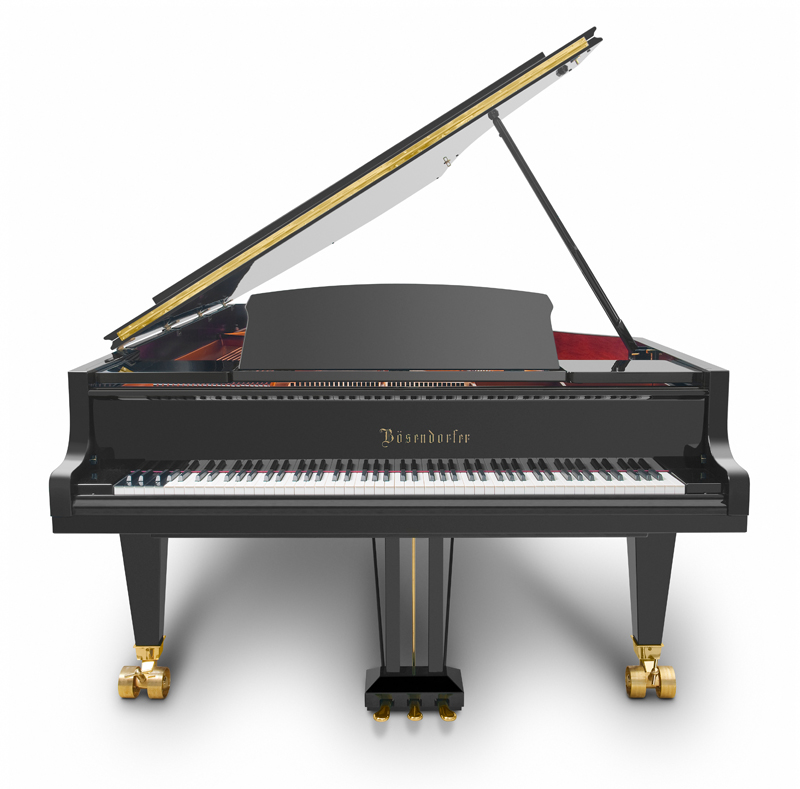
In the following video, you can listen to the sound of these extra keys (they sound pretty weird):
7. Up to 1,200 Pounds (500+ kg) in Weight
Many of us have experienced the challenge of moving a piano; upright pianos alone are notoriously heavy. Grand pianos, however, are even more massive. A concert grand piano can weigh up to 1,200 pounds (544 kilograms), which is roughly the weight of a polar bear or a small car!
8. 10,000 Pianos per Year by Yamaha
Yamaha is one of the world’s largest piano manufacturers, producing more than 10,000 pianos annually, showcasing its dominance in global piano production. If you are the owner of one of their pianos, it is possible to identify the date at which it was built on this page.
9. 10,000+ Components in a Single Piano
A piano is an extraordinary feat of engineering and craftsmanship, typically made up of around 10,000 individual parts, from the smallest screws to the large cast-iron frame that supports the immense string tension. For some high-end models, this number can climb to as many as 12,000 components! To put it into perspective, each key on the piano operates through a complex system of over 100 moving parts! They work in harmony to allow us to produce sound simply by pressing the key.
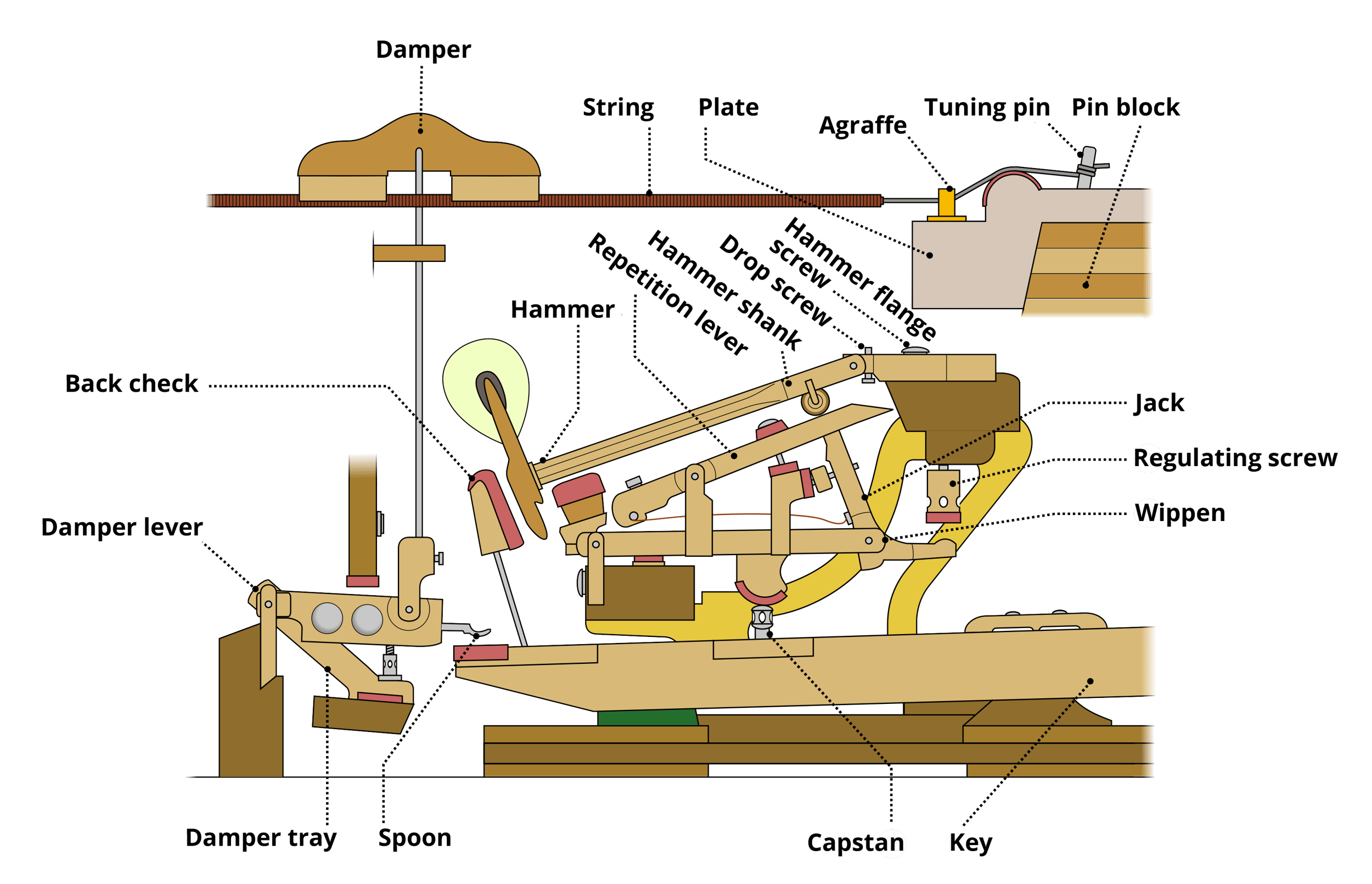
10. 3 years to Build a Grand Piano
Crafting a grand piano is an intricate process that can take years, including assembling the frame, stretching the strings, and meticulous fine-tuning. However, it is important to remember that the wood seasoning and drying can take up to two years in some cases, to ensure optimum quality.
11. Spruce Soundboards: 80% of High-Quality Pianos
The soundboard is critical to a piano’s resonance, and we can confidently estimate that at least 80% of high-quality pianos use spruce wood, prized for its superior acoustic properties. According to Yamaha, the use of wood is to ensure that only the lower-frequency sounds are amplified; otherwise, the “metallic jangling” noises of the strigs striking the chord would be amplified too.
12. 1,000,000 Hammer Strikes per Year!
A piano’s hammers strike its strings with incredible precision. In active use, the hammers in a well-loved piano endure over 1,000,000 strikes per year without significant wear, thanks to their robust wool-felt construction. If you are interested, here is a short calculation to show this:
If you played for about 30 mins per day, with an average of 115 notes per minute (quite a conservative average, see the world record below!), that’s 3450 (30*115) notes per day! Multiply this by 300 active days, that’s over 1 million notes played!
13. Temperature Sensitivity: 3°C Can Make a Difference
Pianos are highly sensitive to temperature changes. A fluctuation of just 5°F (about 3°C) can alter the tuning of a piano, and audibly change the tuning. Obviously, extreme temperatures and humidities have a much bigger impact, and must be avoided at all costs.
Economic statistics
14. The Most Expensive Piano Ever Sold: $3.22 Million
The Crystal Piano by Heintzman, a transparent masterpiece designed for elegance and acoustic excellence, sold for an eye-popping $3.22 million at an auction in 2008. Played during the Beijing Olympics, this piano exemplifies the intersection of luxury and art in musical instruments.
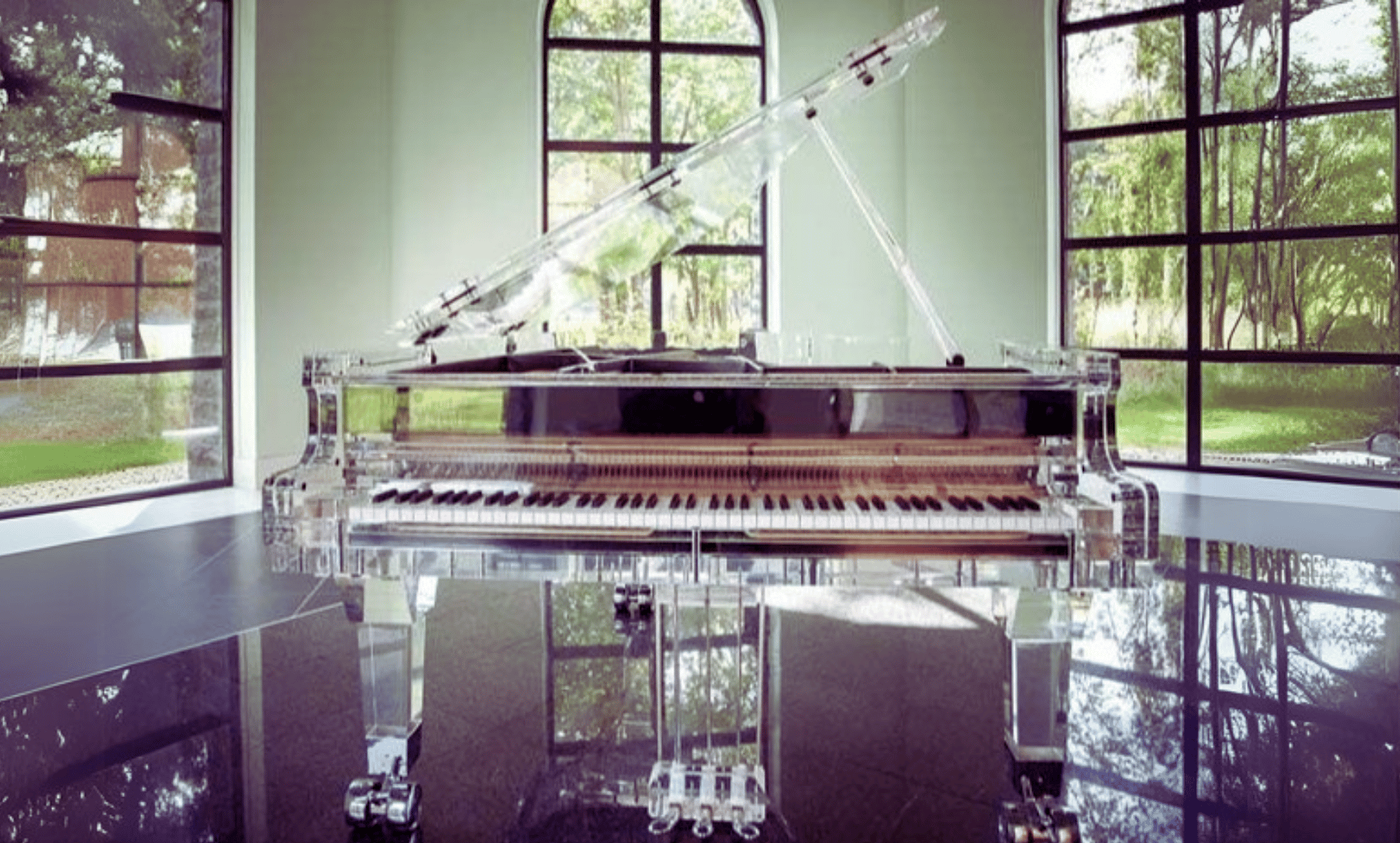
15. Piano Costs: From $50 to Over $500,000
Piano prices vary dramatically. Entry-level digital keyboards can cost as little as $50, making them accessible for beginners. On the other end of the spectrum, handcrafted grand pianos like those from Steinway & Sons or Fazioli can exceed $500,000, reflecting their unparalleled quality and craftsmanship.
16. Second-Hand Pianos: 20% of Sales
Around 20% of piano sales worldwide come from the second-hand market. This highlights the durability of the piano and its long-term appeal, as well-maintained instruments can retain their quality and value for decades. However, it also shows that many buyers choose to avoid the risk of acquiring an old wreck of a piano when they have sufficient budget!
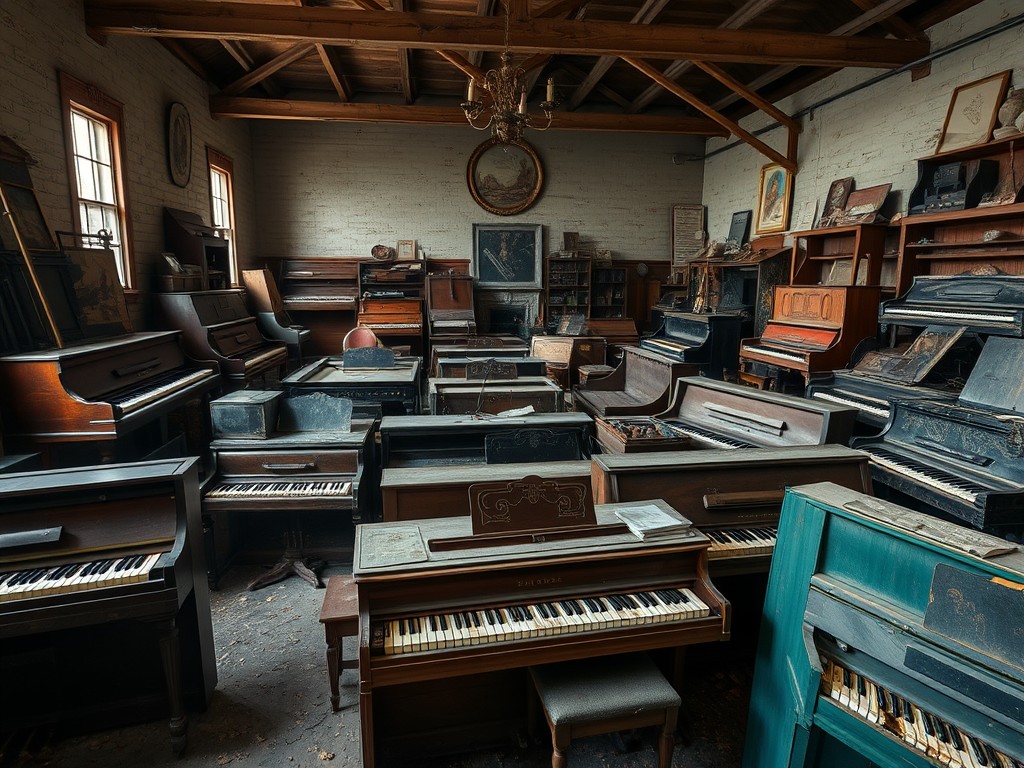
17. Global Piano Market Value: $2.5 Billion in 2024
The global piano market is calculated at $2.32 billion in 2024, with a steady growth rate of 2.7% from 2023. This growth could be attributed to factors like economic conditions, demographic shifts, and changes in education policies. Over the next few years, the market is expected to continue expanding, reaching $2.62 billion by 2028 with a CAGR of 3.1%
Piano Playing and Usage
18. Fastest Fingers: 958 Notes Per Minute
In the following clip, you will see him beat another world record: he hit a piano key 484 times in 30 seconds!
19. A Piano’s Lifespan: Over 50 Years
20. Practice Makes Perfect: 40+ Hours Per Week
21. Longest Piano Performance: 140 Hours and 30 Minutes
22. (One of the) Most complex Piano Composition(s): “Hammerklavier” by Beethoven
Unusual and Fun Statistics
23. World’s Largest Piano: 18 Feet Long
The largest piano ever built was built by Adrian Mann in New Zealand. Measuring 18 feet long, it is a true marvel of craftsmanship, with 85 keys and an impressive size that adds to its musical charm. Adrian Mann built it after asking his piano teacher a question he couldn’t answer, which led him on a long and arduous journey to invent the world’s longest piano. Oh and I bet he had a lot of fun in the process!
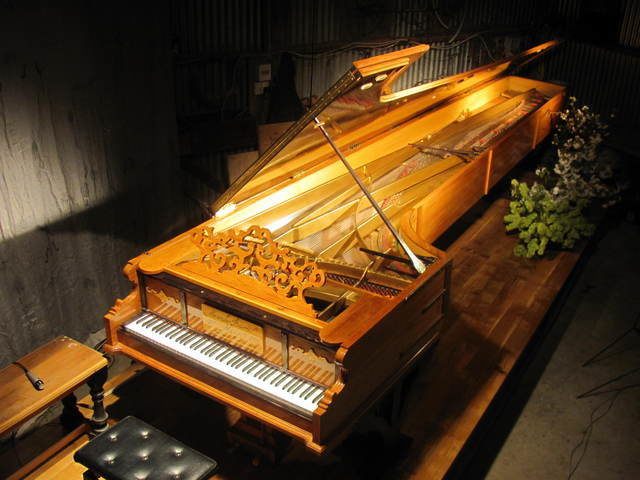
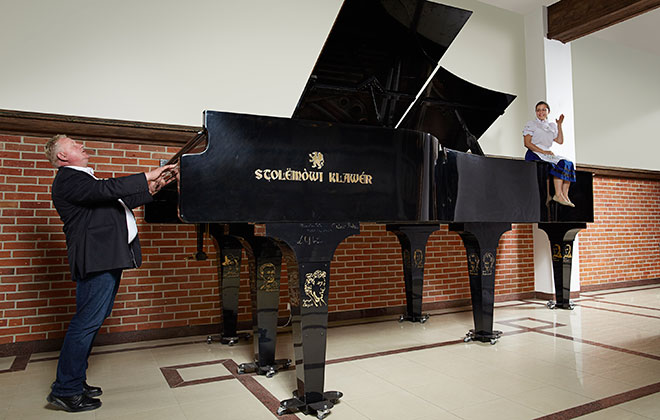
24. Amount of piano’s in the US alone: 10 million
Over 10 million pianos are currently in use across homes, businesses, and schools in the United States, according to multiple sources. While piano sales have seen a decline in recent years, this enduring number highlights the longevity of pianos, and shows how they have integrated into American culture.
25. World War II Pianos: Made from Unconventional Materials
During the Second World War, pianos were made from aluminium and other substitute materials due to the shortage of metals. This ingenuity made it possible to continue producing pianos, although the quality of the instrument was affected. The change in materials marked a unique moment in the history of piano making.
26. Victory Verticals: Over 3,000 Pianos Built for U.S. Troops During WWII
Steinway produced over 3,000 Victory Vertical pianos during the Second World War, which were sent to soldiers on the battlefield. These pianos were specially designed for air transport and were dropped by parachute to provide music and relaxation for the troops. They were produced in a variety of colours, including olive green, blue and grey.
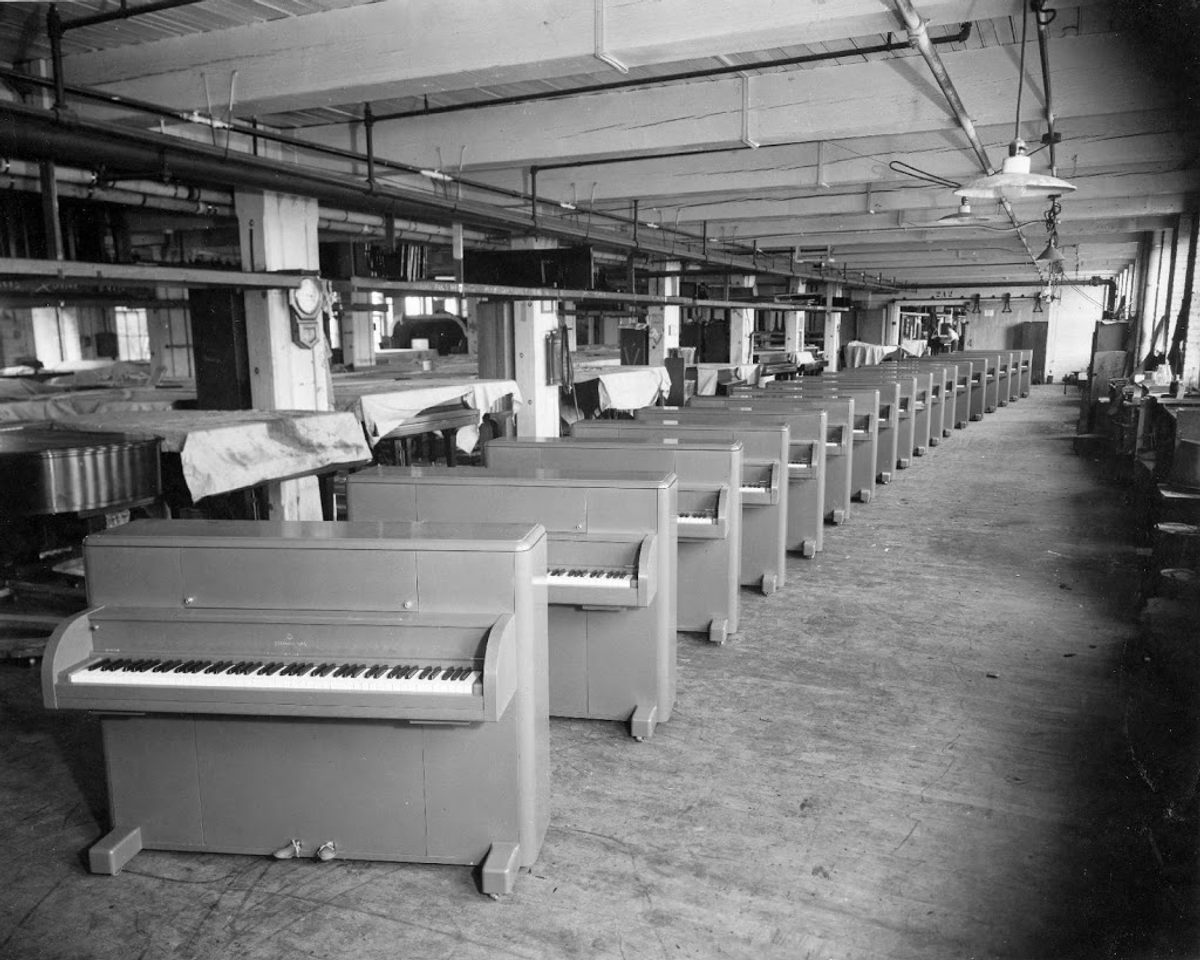
Fascinating Trivia Facts
27. Hidden Pianos: Over 500 in Cities around the world
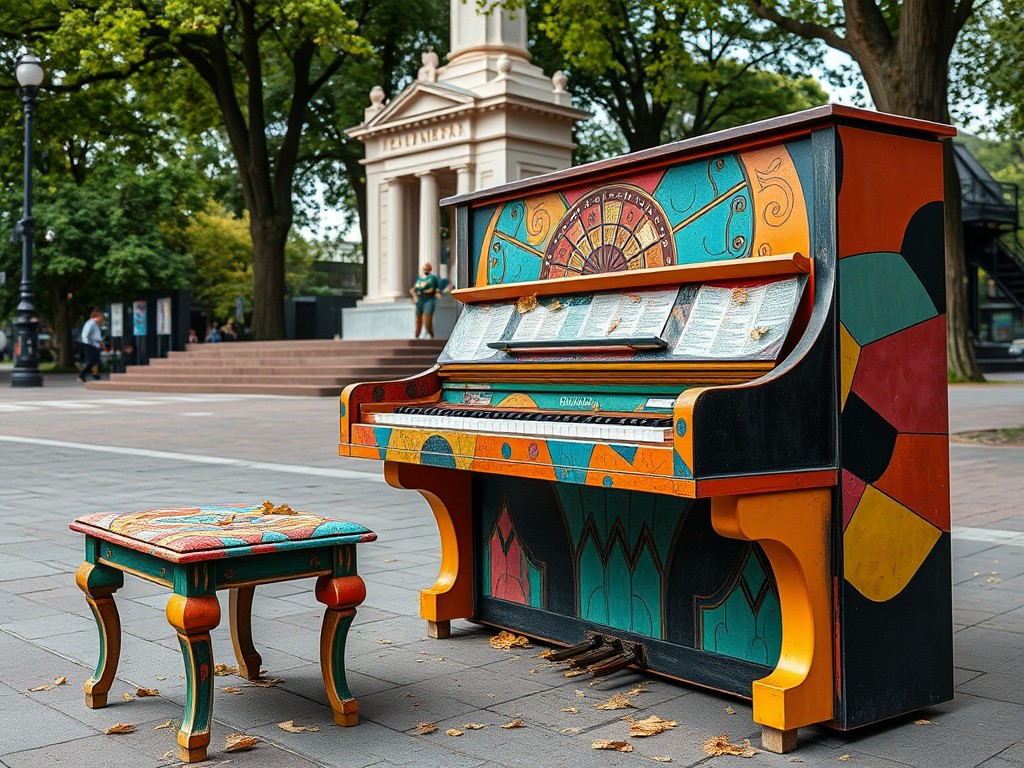
28. Pianos beyond Earth: A keyboard on a Space Mission
29. World’s Most Played Piano Song: Beethoven’s “Ode to Joy”
30. The 639-Year Concert: A Performance Like No Other
Quiz
If you’ve made it this far, thank you for exploring the incredible world of piano stats—and an extra shoutout if you took the quiz! From the 18-foot-long world’s largest piano to the 3.22 million-dollar Crystal Piano, the numbers behind this iconic instrument are nothing short of mind-blowing.
What fact amazed you the most? Share your thoughts in the comments below or join the conversation in our forum, where fellow pianists and music lovers are waiting to chat, share experiences, and inspire one another. Whether you’re here to learn, to connect, or just for the love of music, your voice is always welcome in the KeynoteAuthority community.
⬇️ Sources and References
- https://www.steinwaybocaraton.com/about/159-facts-about-steinway-and-the-pianos-they-build
- https://ohmyfacts.com/culture-art/20-piano-facts-for-music-lovers/
- https://www.hoffmanacademy.com/blog/piano-facts-fun-interesting-info-hoffman-academy
- https://www.pianote.com/blog/piano-facts/
- https://roli.com/blog/world-piano-day-8-interesting-facts-about-the-piano
- https://thepianosensei.com/13-interesting-piano-facts-you-didnt-know/
- https://lessonsinyourhome.net/blog/8-facts-you-probably-didnt-know-about-the-piano/
- https://www.worldwideworldrecords.com/post/longest-piano-marathon-timothy-k-abraham-world-record
- https://singforhope.org/pianos
- https://www.steinway.com/news/features/steinway-sons-victory-vertical
- https://www.historyinthemargins.com/2024/04/26/pianos-for-victory/
- https://www.bbc.co.uk/newsround/49418225
- https://omahaschoolofmusicanddance.com/our-blog/15-interesting-facts-about-the-piano/
- https://joshuarosspiano.com/piano-facts/
- https://www.statista.com/outlook/cmo/toys-hobby/musical-instruments/acoustic-pianos-stringed-keyboard-instruments/worldwide
- https://blog.sheetmusicplus.com/2012/06/06/top-10-little-known-facts-about-the-piano/
- https://bestdigitalpianoguides.com/20-interesting-piano-facts/
- https://www.statista.com/statistics/448574/number-of-grand-pianos-sold-in-the-us/
- https://www.thinkchina.sg/society/chinas-middle-class-families-are-giving-their-pianos
- https://www.lemonde.fr/en/economy/article/2024/08/24/china-s-piano-market-is-collapsing-reflecting-the-concerns-of-the-middle-class_6721202_19.html
- https://www.steinway.com/news/news-clippings/fox-55ny-lap-of-luxury-steinway-hall0
- https://www.thebusinessresearchcompany.com/report/piano-sales-global-market-report
- https://pianoguidance.com/how-many-hours-do-famous-pianists-practice/
- https://europe.yamaha.com/en/products/contents/musical_instrument_guide/piano/trivia/trivia006.html
- https://www.guinnessworldrecords.com/world-records/most-piano-key-hits-in-one-minute
- https://usa.yamaha.com/support/finding_age_of_yamaha_piano/index.html
- https://msteinert.com/blog/how-long-does-it-take-to-build-a-steinway
- https://hub.yamaha.com/pianos/p-acoustic/a-brief-guide-to-piano-tonewoods/
- https://europe.yamaha.com/en/products/contents/musical_instrument_guide/piano/trivia/trivia006.html
- https://www.richardlawsonpianos.com/piano-dealer/does-the-heat-affect-your-piano/.
- https://msteinert.com/blog/most-expensive-pianos

![Read more about the article Master Your Piano Practice Routine: 6 Proven and Actionable Tips [NEW C.H.O.R.D.S method]](https://keynoteauthority.com/storage/2025/01/Master-Your-Piano-Practice-6-Actionable-Tips-300x169.png)
![Read more about the article 20 Unique Types of Pianos Explained [With Pictures]](https://keynoteauthority.com/storage/2025/02/Types-of-Pianos-300x169.png)